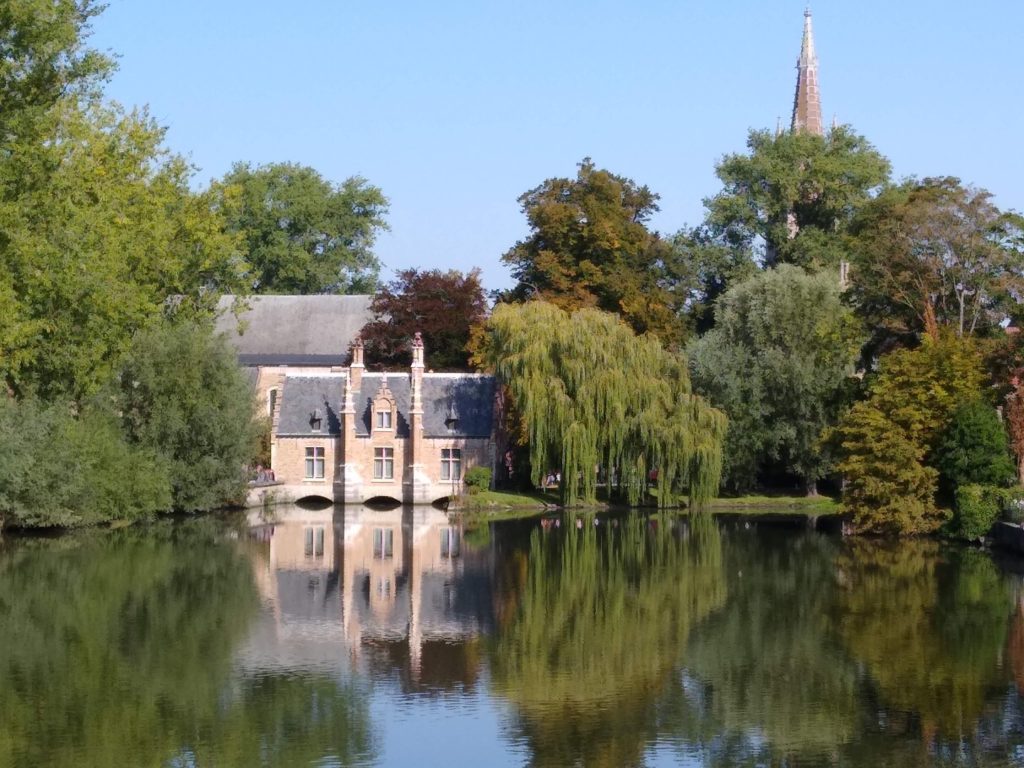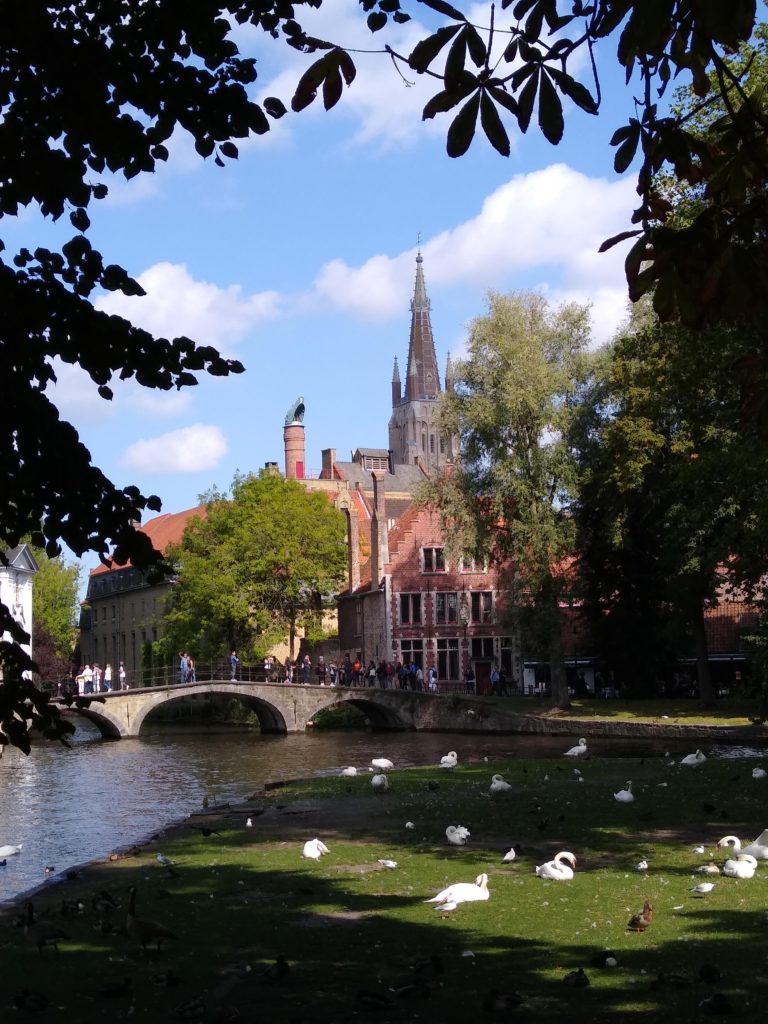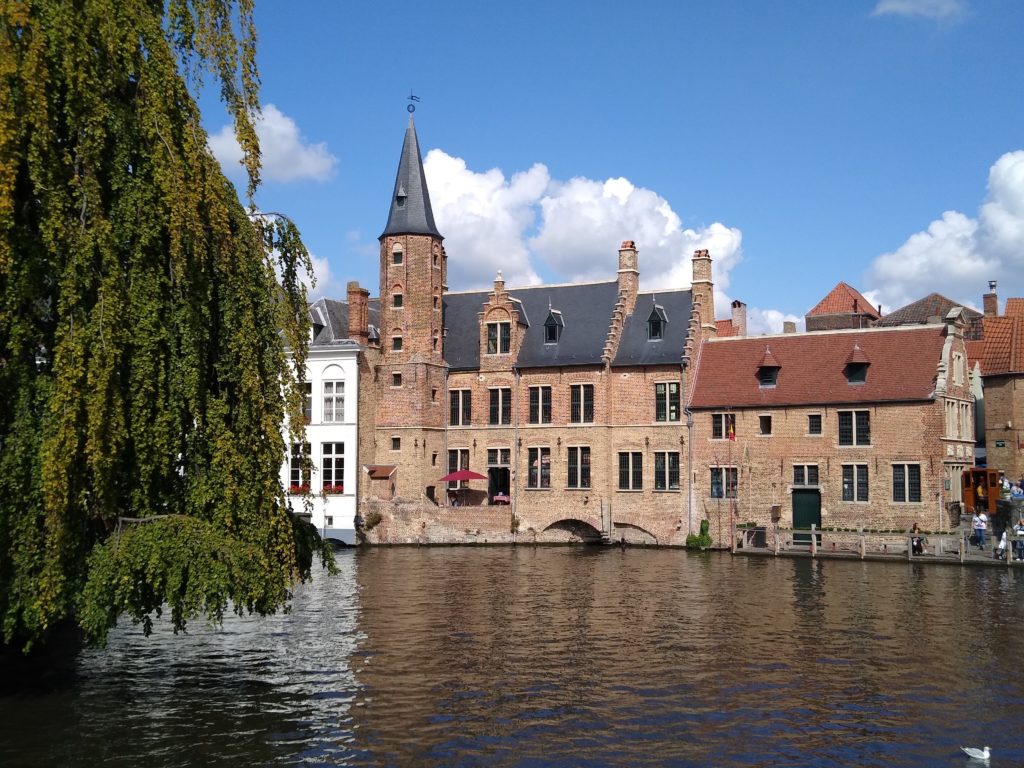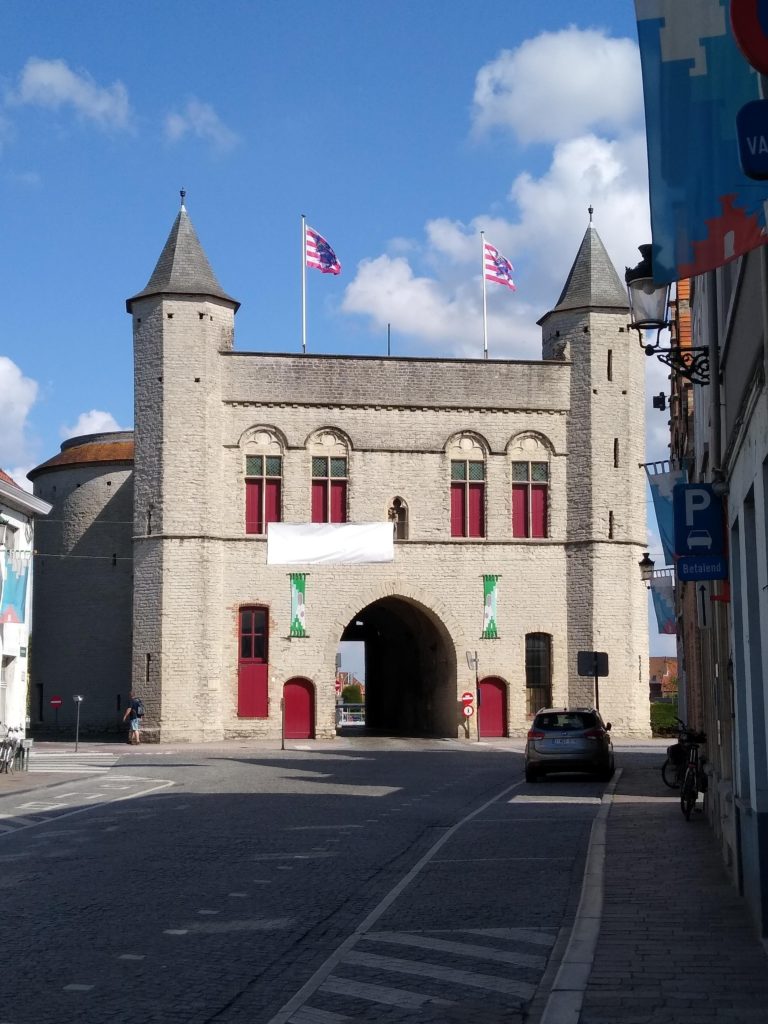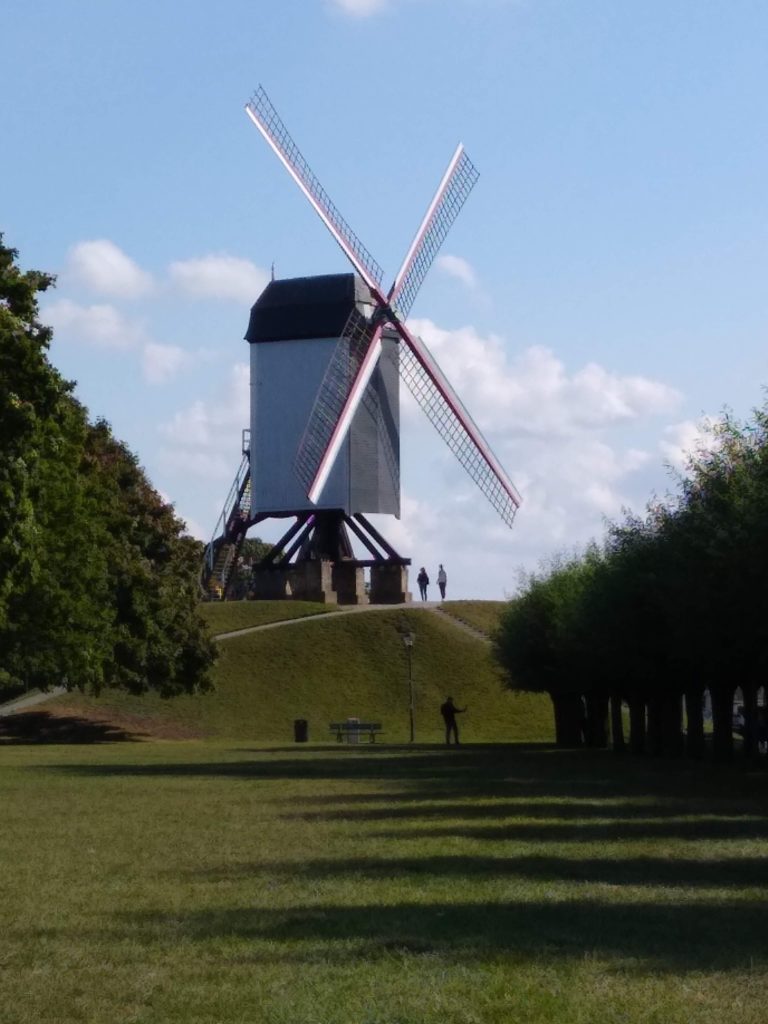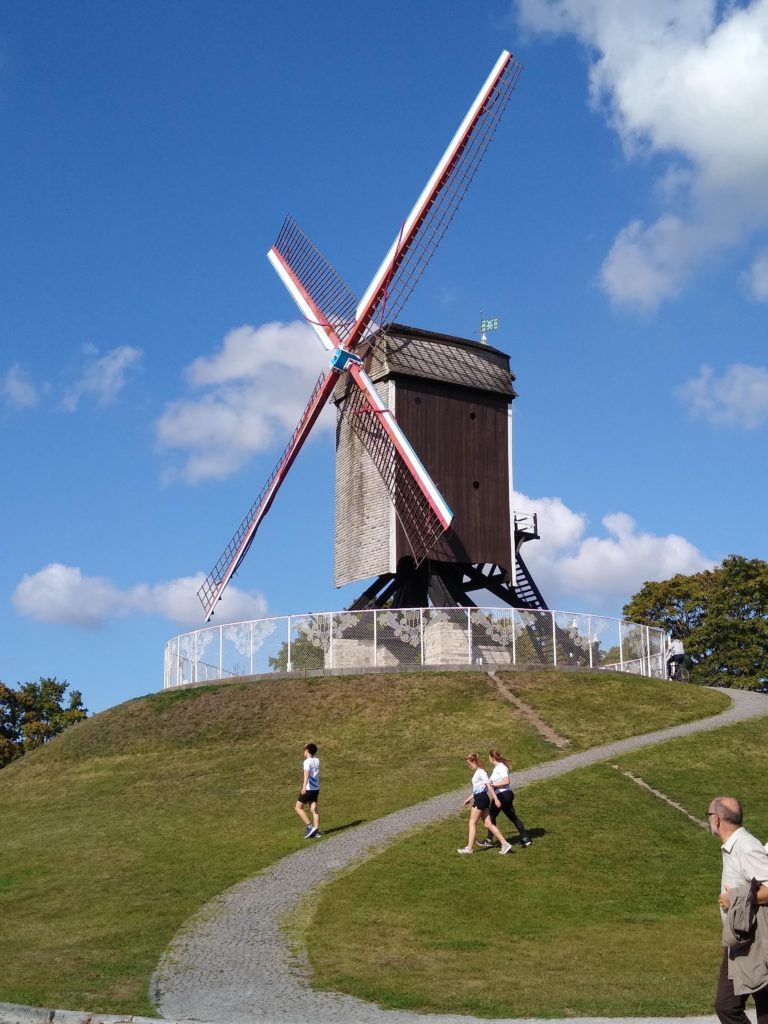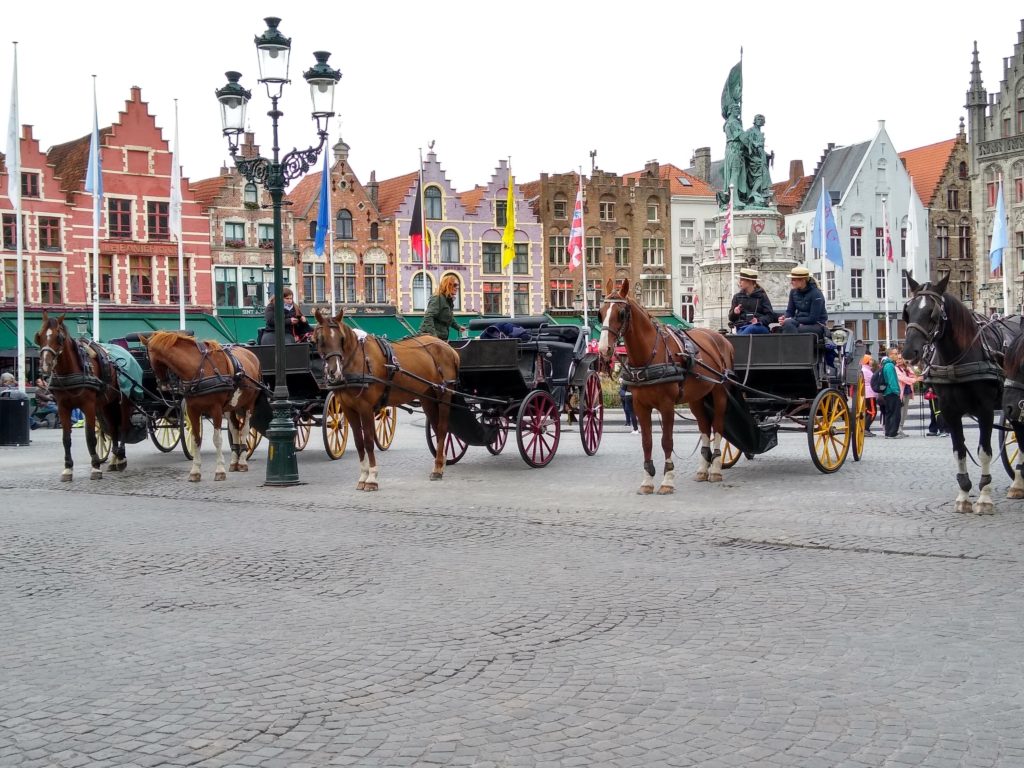Some say Bruges is the prettiest town in Europe. I don’t know if I would go that far but it is right up there. We spent our first four nights in Belgium in this beautiful city and enjoyed every moment.

Quintessential Bruges

Getting from Delft to Bruges was the most complicated leg of our trip. It required a train to Rotterdam where we were able to meet with a ticket agent to plan the rest of our journey into a new country – Belgium. (There is no ticket agent in Delft; all tickets are purchased by machine.) From Rotterdam, we took the train to Antwerp where we switched to a train bound for Ghent where we finally caught the train to Bruges. Then we had a fifteen minute walk through a park to get to our AirBnB. All in all, it took us five hours.
Of our three full days in Bruges, two were nice and mostly sunny and one was drizzly. The drizzly day became our museum day. The first sunny day we spent walking and discovering Bruges. The other sunny day I took some time to paint en plein aire which made for a relaxing day.
Highlights of Bruges
Our host provided us with a road map to follow to see some of the best of Bruges. We literally walked from one end of town to the other and back.
Our route took us back toward the train station to Minnewater Park and a small lake so lovely that the French name is Lac L’Amour. There are dozens of swans here. The story goes that when this area was ruled by Austria, the mayor who had a very long neck and who had aided the Austrians was beheaded by the people. The Austrian in charge brought in the swans and said that they would remain in Minnewater from that time on and here they are.
Adjacent to Minnewater is the Begijnhof, a campus that used to house widowed women during the Crusades but has since been taken over by the Benedictine nuns. It is a quiet place for contemplation and prayer with a chapel, simple houses, and a courtyard.
Up the street from there is the DeHalve Mann Brewery that offers tours and tastings of the local beer – Bruges Zot. We did not take the time for either as the tourist buses had taken it over by the time we got there. We ate lunch at a cafe nearby and watched them come in droves.
A little further on you pass, in quick succession, the Church of Our Lady, the Gruuthuis Museum and the Groenigen Museum (the latter was where we spent our museum day, more later). Then we got to scenic Bruges, walking along one of its prettiest canals.
From there it was a long walk through residential areas to another shopping street out to the old moat and the one remaining old gateway into the city and, finally onto Bruges’ windmills. There are four of them stretching out toward the next town over, Damme. We only went as far as two.
Turning back toward the city center, we passed the Jerusalem Chapel and Burg Square, ending up in Market Square. We made a quick stop for a drink and headed back to our room. It was quite a day!
Bruges at Night
Bruges is magical at night. On Monday and Wednesday they put on a carrillon concert in the Belfort. We caught one of these our first night in town. It was wonderful. During the day, on market day, we heard the carrillon’s rendition of Piano Man!

Market Square
Groenigen Museum
This small art museum takes you through the history of Fleisch art. It starts with the Flemish Primitives (1500s) and ends with Rene Magritte. The level of detail undertaken by the Flemish Primitives was amazing. As an artist, I wondered how they achieved it given the tools and paints of the times. These artists had studied the Italians but improved upon their techniques by using oil rather than egg yolks for mixing paint, allowing for smoother flow and allowing for finer detail. The rest of the world then copied them. These are some of our favorite pieces.


